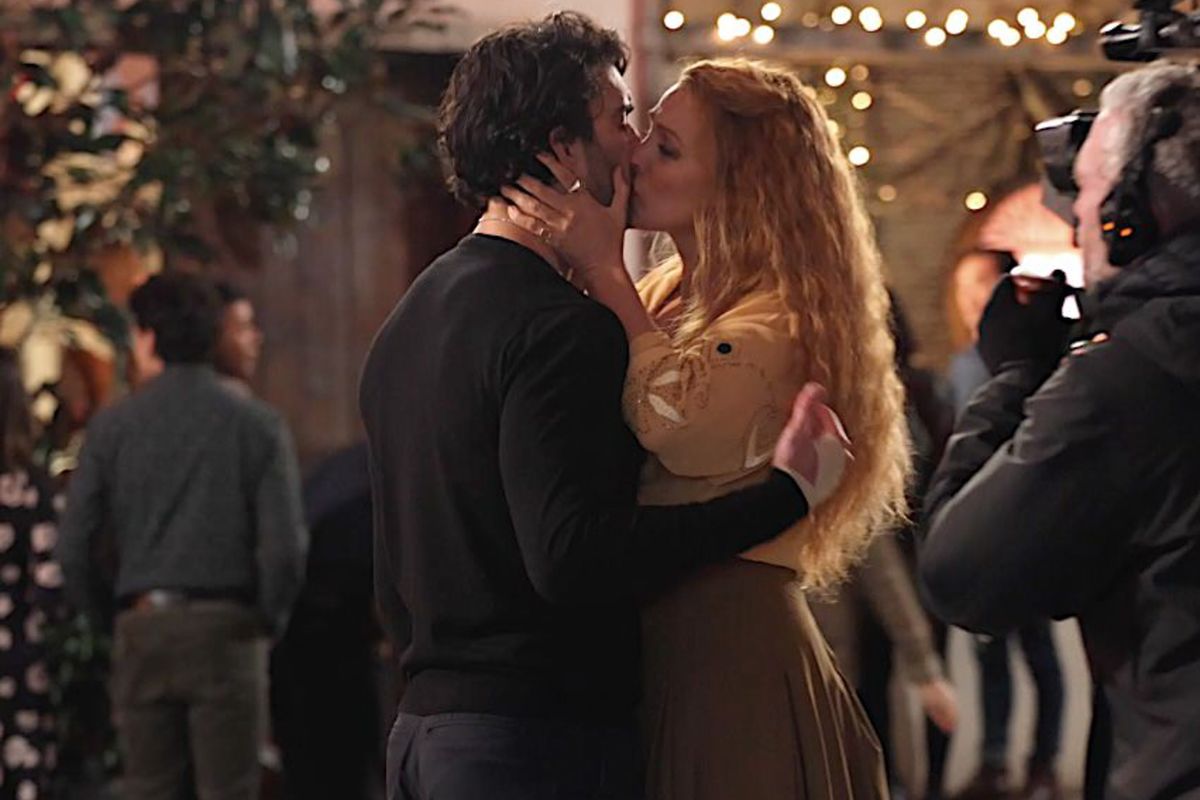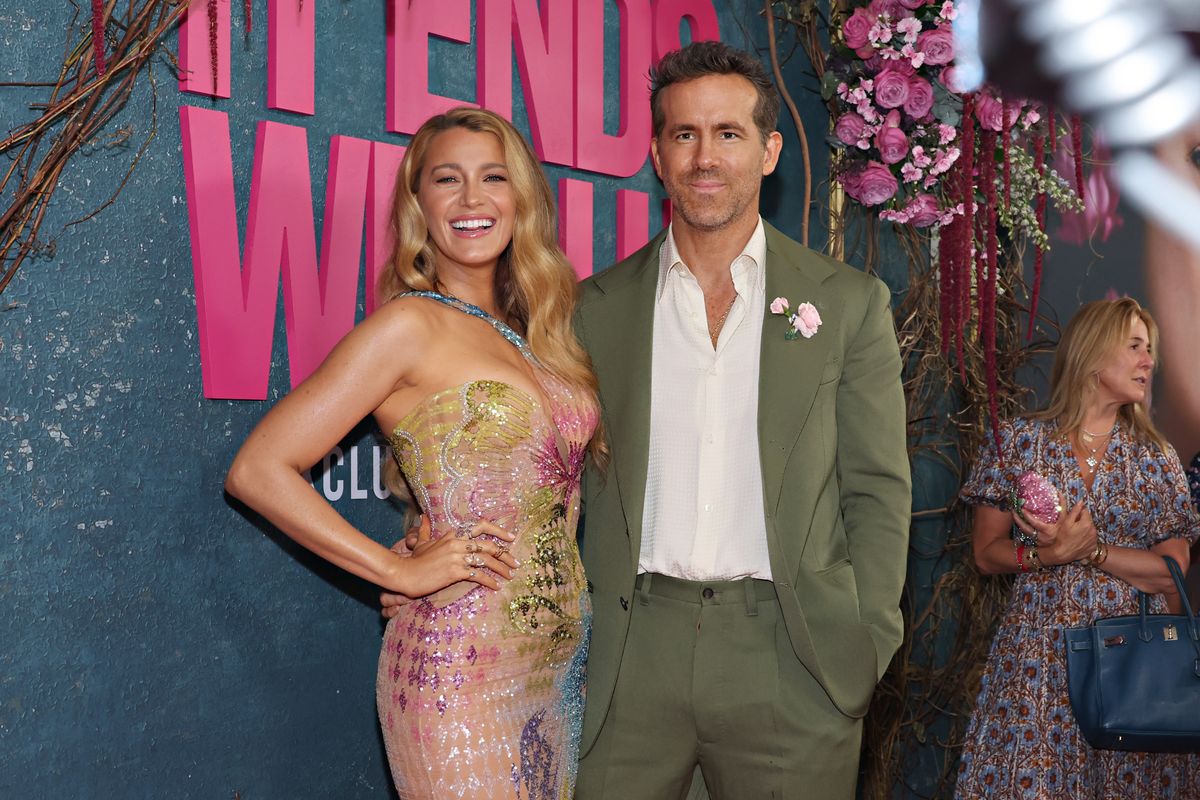Lauren Williams
Guest Reporter
Actor Justin Baldoni has filed a lawsuit claiming Ryan Reynolds "aggressively berated" him during a meeting at Reynolds and Blake Lively's home on January 4.
The allegations form part of a £199million legal action against The New York Times, filed on December 31.
Baldoni, who directed and starred in the film It Ends With Us alongside Lively, claims he and other producers were invited to the couple's home to discuss filming plans.
Instead, the lawsuit alleges they were "blindsided" by Reynolds and Lively, who confronted them with "unanticipated and troubling" grievances.
According to legal documents, Baldoni and his team arrived "eager to discuss plans for the next day's filming, prepared with their production materials."
The meeting was attended by other It Ends With Us producers and a Sony representative.

The lawsuit states that instead of discussing production matters, Lively and Reynolds presented "a list of grievances that were both unanticipated and troubling."
The confrontation allegedly took place as "other celebrity friends were coming in and out of their penthouse," which Baldoni's legal team described as "inappropriate and humiliating."
Reynolds allegedly accused Baldoni of "fat-shaming" his wife, demanding an apology for actions which Baldoni claims were "mischaracterised and demonstrably false."
The lawsuit states Baldoni has "never been spoken to like that in his life" and his refusal to apologise "further enraged" Reynolds.

The dispute reportedly stemmed from Baldoni inquiring about Lively's weight for a scene where his character needed to lift her.
Baldoni, who suffers from back issues, claims this was a "reasonable inquiry" made for safety reasons through a trainer recommended by the couple themselves.
Following the confrontation, Lively allegedly refused to perform the lift scene and threatened to quit unless Baldoni agreed to "work the way she works."
The lawsuit comes amid an escalating legal battle between the stars of the movie.
In December, Lively initiated legal proceedings against Baldoni, alleging sexual harassment on set and claiming he orchestrated a smear campaign against her.
Lively filed a second lawsuit on Tuesday in a federal court in New York, claiming Baldoni and his team retaliated against her for reporting misconduct.

The actress alleges Baldoni improvised "physical intimacy" scenes without rehearsal or an intimacy coordinator.
Baldoni's £199m lawsuit against The New York Times challenges their article "'We Can Bury Anyone': Inside a Hollywood Smear Machine," claiming the newspaper "cherry-picked" information to mislead readers.
Lively's legal team responded to Baldoni's lawsuit, stating: "Nothing in this lawsuit changes anything about the claims advanced in Ms. Lively's California Civil Rights Department Complaint, nor her federal complaint."
They added: "While we will not litigate this matter in the press, we do encourage people to read Ms. Lively's complaint in its entirety."
The New York Times defended their reporting, saying: "Our story was meticulously and responsibly reported. It was based on a review of thousands of pages of original documents."
Find Out More...
The allegations form part of a £199million legal action against The New York Times, filed on December 31.
Baldoni, who directed and starred in the film It Ends With Us alongside Lively, claims he and other producers were invited to the couple's home to discuss filming plans.
Instead, the lawsuit alleges they were "blindsided" by Reynolds and Lively, who confronted them with "unanticipated and troubling" grievances.
According to legal documents, Baldoni and his team arrived "eager to discuss plans for the next day's filming, prepared with their production materials."
The meeting was attended by other It Ends With Us producers and a Sony representative.

The lawsuit states that instead of discussing production matters, Lively and Reynolds presented "a list of grievances that were both unanticipated and troubling."
The confrontation allegedly took place as "other celebrity friends were coming in and out of their penthouse," which Baldoni's legal team described as "inappropriate and humiliating."
Reynolds allegedly accused Baldoni of "fat-shaming" his wife, demanding an apology for actions which Baldoni claims were "mischaracterised and demonstrably false."
The lawsuit states Baldoni has "never been spoken to like that in his life" and his refusal to apologise "further enraged" Reynolds.

The dispute reportedly stemmed from Baldoni inquiring about Lively's weight for a scene where his character needed to lift her.
Baldoni, who suffers from back issues, claims this was a "reasonable inquiry" made for safety reasons through a trainer recommended by the couple themselves.
Following the confrontation, Lively allegedly refused to perform the lift scene and threatened to quit unless Baldoni agreed to "work the way she works."
The lawsuit comes amid an escalating legal battle between the stars of the movie.
In December, Lively initiated legal proceedings against Baldoni, alleging sexual harassment on set and claiming he orchestrated a smear campaign against her.
Lively filed a second lawsuit on Tuesday in a federal court in New York, claiming Baldoni and his team retaliated against her for reporting misconduct.

The actress alleges Baldoni improvised "physical intimacy" scenes without rehearsal or an intimacy coordinator.
Baldoni's £199m lawsuit against The New York Times challenges their article "'We Can Bury Anyone': Inside a Hollywood Smear Machine," claiming the newspaper "cherry-picked" information to mislead readers.
Lively's legal team responded to Baldoni's lawsuit, stating: "Nothing in this lawsuit changes anything about the claims advanced in Ms. Lively's California Civil Rights Department Complaint, nor her federal complaint."
They added: "While we will not litigate this matter in the press, we do encourage people to read Ms. Lively's complaint in its entirety."
The New York Times defended their reporting, saying: "Our story was meticulously and responsibly reported. It was based on a review of thousands of pages of original documents."
Find Out More...
